Case Studies.
Add Case Study
Our Case Study database tracks 22,657 case studies in the global enterprise technology ecosystem.
Filters allow you to explore case studies quickly and efficiently.
Download Excel
Filters
-
(6,653)
- (2,601)
- (2,127)
- (945)
- View all
-
(5,642)
- (2,469)
- (1,692)
- (826)
- View all
-
(5,571)
- (2,178)
- (1,766)
- (643)
- View all
-
(5,247)
- (2,179)
- (1,715)
- (1,321)
- View all
-
(2,881)
- (1,448)
- (574)
- (376)
- View all
- View all 15 Technologies
- (1,985)
- (1,985)
- (1,915)
- (1,679)
- (1,629)
- View all 42 Industries
- (8,728)
- (4,742)
- (3,618)
- (3,233)
- (2,947)
- View all 13 Functional Areas
- (3,304)
- (2,787)
- (2,603)
- (2,006)
- (1,630)
- View all 129 Use Cases
- (13,581)
- (5,296)
- (4,272)
- (3,520)
- (2,856)
- View all 9 Services
- (504)
- (432)
- (416)
- (382)
- (301)
- View all 1083 Suppliers
Selected Filters
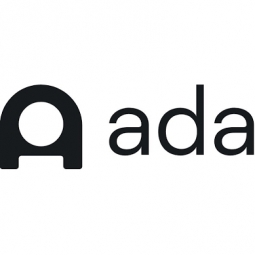
|
Shapermint's AI-Powered Customer Service Boosts Sales and Engagement
Shapermint, a leading ecommerce website for women's intimates, shapewear, and loungewear, faced a challenge in scaling its customer support operations to keep up with its rapid growth. The company recognized the potential of offering 24/7 live chat on their website to enhance customer experience and drive sales. However, they were concerned about their capacity to meet the demand for high-quality service in synchronous messaging. The challenge was to scale up their synchronous customer engagement without compromising on the quality of their industry-leading customer experience.
|
|
|
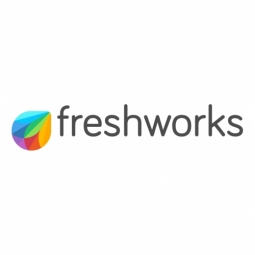
|
Big Bus Tours: Building a Unified Support Hub with Freshdesk Omnichannel
Big Bus Tours, the world's largest open-top sightseeing service, was facing a significant challenge in managing their customer support. With a scattered support team and no visibility into customer context, they were struggling to provide a unified and efficient customer service experience. The company was also missing out on identifying revenue-generating opportunities due to the lack of data. The support team was working out of a shared inbox, which provided little to no customer context, making it difficult to manage the increasing volume of queries. The data was too siloed to offer a unified experience to both the support team and customers. The company wanted to centralize all 23 separate in-city customer service functions and create a customer service excellence center. They also wanted to give customers the opportunity to communicate through any channel they choose, including social media.
|
|
|

|
Bracknell Forest Council Boosts Self-Service Usage by 76% with Freshservice
Bracknell Forest Council, a local authority in Berkshire, England, was facing several challenges with their legacy ticketing system. The system was heavily reliant on traditional channels such as emails and phone calls, which limited the efficiency of the teams. The system required heavy customizations to meet the council's needs, making it difficult for non-IT teams to use. The council's IT environment was plagued with manual processes and the system was heavily siloed, restricting the flow of information among teams and resulting in longer resolution times. The council was in need of a modern, user-friendly IT service desk that would enable them to serve their customers better. They were looking for a solution that would provide self-service capabilities to reduce agent workload, visibility across teams for better collaboration, and an easy learning curve for non-technical teams.
|
|
|

|
C&K Enhances Business Processes and IT Alignment with Freshservice
The Creche and Kindergarten Association Limited (C&K), a leading non-profit organization in Australia, faced significant challenges in managing its IT service management (ITSM) tool. With over 350 centres across Queensland, C&K was struggling to scale its processes, systems, and IT infrastructure to meet the demands of its expanding operations. The existing ticketing system was inadequate, leading to misrouted tickets, miscommunication, and a lack of visibility. The system's inability to categorize and route tickets to the right team resulted in confusion and inefficiency. Additionally, the workload was unmanageable, leading to employee burnout. The approval process was cumbersome, involving 10-12 pages of handwritten paperwork and uploading this information onto an external government portal. The lack of a priority matrix and SLA management led to ticket resolution times ranging from 2 days to 2 weeks, causing chaos and frustration.
|
|
|

|
CeX WeBuy Leverages Freshdesk to Manage Surge in Customer Enquiries During COVID-19
CeX WeBuy, a global dealer of second-hand electronics, video games, and computing equipment, faced a significant challenge during the COVID-19 pandemic. The company, which relies heavily on its physical stores for buying and selling used products, was hit hard by the lockdown restrictions. The closure of stores led to a surge in customer enquiries, with ticket volumes increasing by over 100% compared to the previous year. The company was also dealing with the confusion over lockdown guidelines, with customers contacting individual stores to check if they were open and to get updates on their orders. Prior to the pandemic, CeX WeBuy had been using Zendesk to manage its customer support operations, but found it lacking in customization, support, and reporting options.
|
|
|

|
MISA's Success in Achieving 50% Query Deflection Rate with Freshdesk
MISA, an online fashion retailer, faced a significant challenge in managing customer support and communication during the COVID-19 pandemic. The shift in consumer behavior towards online shopping led to an explosive growth in digital footfall, increasing MISA’s average number of orders from 30-50 a day to about 70-100 a day. This surge in orders resulted in higher support volumes, with customers frequently enquiring about their orders and delivery status. The team struggled to prioritize issues as their existing email systems ordered conversations based on the latest response rather than the urgency of the queries. Additionally, the shift to remote work due to the pandemic raised concerns about effective team collaboration and communication. MISA also faced the challenge of dealing with repetitive customer queries, which were time-consuming and redundant.
|
|
|

|
STEEZY.Digital's Scalable Real Estate Marketing Tech Agency with ManyChat
STEEZY.Digital, a real estate marketing tech company based in California, was struggling with the results of their general marketing campaigns. The founder, Jeffrey Brogger, was dissatisfied with the high-ticket sales of homes that required an extra human touch to close the deal. He was looking for a better way to enhance the real estate market. The shift of commerce and communication from email to Messenger was also observed, with real estate marketers using the new channel to close escrow. However, this left out an important aspect of sales: Conversation. Since Jeffrey’s clients sell high ticket offers, the ability to engage their audience, provide valuable content, and qualify prospects before talking with an agent was necessary. He also aimed to reduce the average time it takes to close a sale for his clients.
|
|
|
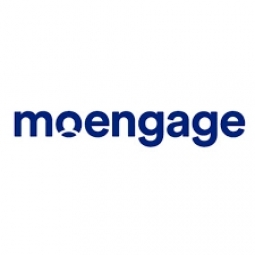
|
Furlenco's Successful Transition to App-Driven Subscriptions Using Contextual Engagement
Furlenco, India's largest furniture subscription-commerce company, was facing a significant challenge in customer engagement and retention. Despite successfully driving app installs, the company was experiencing a low subscription ratio, which was impacting the number of subscriptions coming in from their mobile app. The team identified several customer drop-off points across the customer journey that needed to be addressed. These included reaching out to prospective clients, formulating messages for better subscription rates, determining the frequency of messaging, improving the acquisition and onboarding experience to retain customers, and making the post-onboarding process more meaningful and engaging.
|
|
|
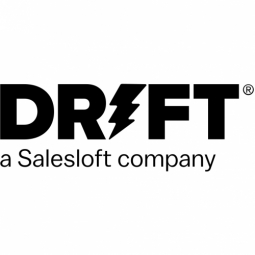
|
Branch Enhances Customer Experience and Conversion Rates with Drift
Branch, a leading provider of mobile linking and measurement platforms, was facing a significant challenge in converting their website traffic into leads. Despite having a healthy amount of organic traffic and mature website pages, not all of their site pages were optimized for conversion. The company was successful in attracting prospects to their site, but struggled to encourage them to take the next step. Additionally, Branch had specific qualification criteria for their enterprise product and needed a tool to automate this process. They wanted to leverage the logic and filtering criteria within a tool to simplify the qualification process for their prospects. The goal was to have the qualification happen automatically before suggesting a conversation about an enterprise plan.
|
|
|

|
Park Place Technologies: Transforming Customer Engagement with IoT Chatbot
Park Place Technologies, a provider of proactive and predictive data center support and maintenance, was facing a challenge with their live chat system. The live chat was only available during certain hours, which meant they were missing out on potential conversations with prospects in different time zones. Additionally, they were unable to engage visitors who used their End of Service Life (EOSL) library page as a reference resource and then left the site without any interaction. The company needed a solution that could engage prospects 24/7, tap into new lead sources, and improve the speed of lead to opportunity and lead to close.
|
|
|
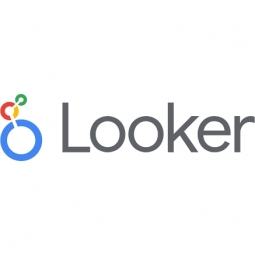
|
Auto Trader's Digital Transformation: Leveraging Data with Looker and Google Cloud
Auto Trader, the UK’s largest digital automotive marketplace, faced a significant challenge when transitioning from print to digital. The company wanted to empower its employees to make data-driven decisions and provide insights to their retailers and consumers. The shift to digital generated a massive amount of data from various online interactions, which everyone, from internal teams to automotive retailers to consumers, was eager to access and use for better decision-making. In 2018, Auto Trader embarked on a journey to modernize their tech stack, centralize data, and provide self-service access to trusted metrics. The company needed to satisfy the data demands of both their internal stakeholders and external users. Retailers wanted to understand how much their cars were worth to consumers and how their ads were performing. Consumers wanted to find the right products by being served up ads relevant to their search. However, the existing data management system became a bottleneck, and new issues arose around how to make personally identifiable information (PII) secure and compliant.
|
|
|
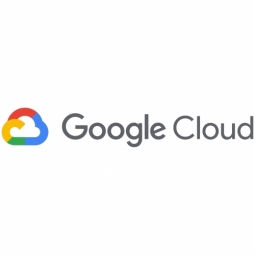
|
autoRetouch: Revolutionizing Image Editing for Online Retailers with Google Cloud
autoRetouch, a Germany-based company, provides an automated image processing platform for fashion image producers worldwide. The shift to e-commerce has increased the demand for high-quality product images, which often require edits such as background removal and skin retouching. For retailers with hundreds of product lines, manually editing each image to perfection is a time-consuming and costly process. autoRetouch aimed to revolutionize this process by making it more time- and cost-effective. However, to train and run the models for its custom-developed machine learning algorithms, autoRetouch required powerful CPU and GPU processors that need to be available on demand. The platform had to be available around the clock and scale from processing a few images to hundreds of thousands, in seconds.
|
|
|

|
AVEVE Group: Streamlining Agricultural Operations with Google Workspace
AVEVE Group, a Belgian agricultural supplier, was facing challenges in coordinating its diverse businesses spread across more than 50 companies and 400 locations. Each of these companies operated independently, running its own administrative processes, leading to a siloed work environment with little communication between different parties. This lack of a unified platform for information and resource sharing was hindering productivity and efficiency. AVEVE Group was looking to centralize and standardize its processes, requiring a robust platform for collaboration. The company also aimed to shift from individual bookkeeping to a shared service center for managing finances for the entire group, necessitating increased inter-company communication.
|
|
|

|
Blockchain.com: Streamlining Infrastructure with Google Cloud Spanner
Blockchain.com, a leading cryptocurrency software company, was facing significant challenges in managing its large databases. The company's primary products, Blockchain Wallet and Blockchain Explorer, required complex calculations on hard-to-access data across vast databases. As the popularity of cryptocurrencies grew and the company expanded to cover other cryptocurrencies such as Ethereum, Bitcoin Cash, and Stellar Lumens, securely maintaining these databases became a major undertaking with significant resource overheads. The company was spending a lot of time and resources on maintaining and managing its infrastructure, which was affecting its ability to focus on domain-specific challenges and deliver a peerless user experience across all products.
|
|
|

|
Alpred SL: Global Expansion of a Local Sports Paper with Google Cloud
Alpred SL, a Spanish information services company, faced the challenge of transforming a traditional print newspaper, Estadio Deportivo, into a sustainable, digital sports media brand. The company aimed to create a free, continuously updated, 100% digital sports news platform for Spanish-speaking sports fans worldwide. However, the existing infrastructure of Estadio Deportivo was entirely on-premise, and its content management system (CMS) was designed for both print and online versions, which was obsolete and no longer fit for Alpred's purposes. The company was dealing with constant setbacks, errors, and outages, which made it difficult to manage. Moreover, the sports world moves fast, and Estadio Deportivo’s services needed to be constantly available and handle considerable traffic peaks, especially on match days.
|
|
|

|
Breuninger: Leveraging Google Cloud for Enhanced Customer Experience
Breuninger, a luxury department store in Germany, was facing a challenge with its complex IT landscape. The company was fragmented into many departments, each with their own technology stack focusing on their own use cases. They had on-premises databases and other systems such as SAP, all gathering different types of data for different business units. This dispersed IT landscape made it difficult for the company to make the most of its data. Furthermore, the company's online storefront, which brought in a significant 30% of sales in 2018, presented exciting opportunities with data. However, to optimize the website and make the online customer experience smoother and more tailored to individual shoppers, Breuninger needed to get its data on track.
|
|
|
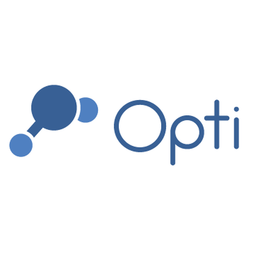
|
Seawage Overflow Reduction
DOEE identified intelligent retention as an important option for limiting wet-weather discharge, storing water on-site for use, and informing future improvements to District infrastructure.
|
|
|
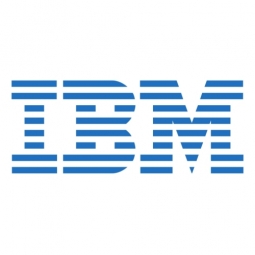
|
Lower Saxony Police Leverages IoT for Crime and Traffic Management
The police forces in the German federal state of Lower Saxony were facing challenges in fighting crime and improving traffic flows due to the lack of efficient use of information from various sources. The existing systems stored information about suspects, incidents, victims of crime, and traffic accidents in several systems, making it difficult for officers to gain an overview without consulting multiple data sources. This process was time-consuming and inefficient. Moreover, the technical demands for analyzing and evaluating incidents had increased over the years, necessitating a more advanced business intelligence solution. The police force needed a solution that could provide officers with individually compiled reports about specific locations and types of crimes in near real-time, supported by a unified, consistent event processing and evaluation system.
|
|
|

|
Mata Capital: Blockchain Case Study on Real Estate Investment Management
Mata Capital, a French real estate fund management company, was facing challenges in distributing fund shares and maintaining its investor registry. The traditional processes were cumbersome, costly, and relied heavily on paper-based systems. The company was also grappling with substantial administrative costs, especially for small investment tickets for Know-Your-Customer (KYC) and registration activities. This resulted in high minimum investment subscription amounts, limiting the pool of potential investors. Furthermore, investors had limited access to secondary markets, making it difficult for them to trade assets as required by their portfolio allocation strategies. Mata Capital sought to modernize and optimize these processes, with a long-term vision to reduce minimum investor subscription amounts from €100,000 to €1, thereby attracting a wider and more diverse pool of investors to real estate asset investments.
|
|
|
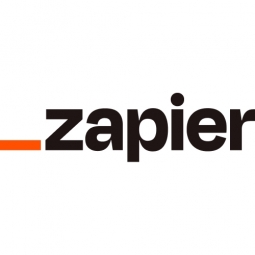
|
Leveraging Facebook Lead Ads for Real Estate Lead Generation: A Case Study
In the highly competitive real estate industry, timing and location are everything. Houses can be sold before they're even officially listed, making it crucial for real estate agents to connect with potential buyers as quickly as possible. The challenge faced by real estate agents was the manual and time-consuming process of downloading leads from Facebook and uploading them to their Customer Relationship Management (CRM) systems. This repetitive task was not only tedious but also inefficient, as it had to be repeated every week or even every day. Moreover, the agents were not able to respond to the leads in real-time, which could potentially result in lost opportunities.
|
|
|
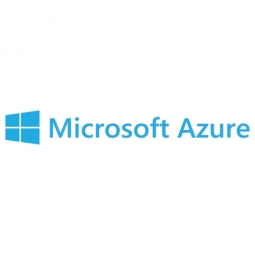
|
Dairy Giant Arla Foods Centralizes Data in Azure for Enhanced Productivity and Flexibility
Arla Foods, the fifth-largest dairy company in the world, faced significant challenges with its data management. The company had a complex, spaghetti-like structure of data systems, each with unique upkeep and management challenges. The cost of maintaining these systems was growing, and employees were spending more time managing the systems than gaining insights from the data within them. The company had thousands of different applications, but none were transferable, creating a highly inefficient set of siloed solutions. Furthermore, the company was using Microsoft Power BI as a visualization tool, but without proper data architecture, the tool quickly became overloaded and began to fail. The company recognized that its current process was not working and set out to find a solution that would both save it money and move its business forward.
|
|
|
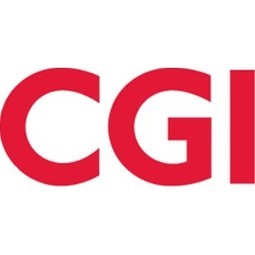
|
Mitigating Cybersecurity Risks in Manufacturing: A Case Study of Jacobs Douwe Egberts
Jacobs Douwe Egberts (JDE), a global coffee and tea company, faced a significant challenge in the wake of a malware incident in 2017 that caused a computer outage across Mondelez’s global operations, resulting in losses of €100M. This incident served as a wake-up call for JDE to implement a robust cybersecurity program to protect its operational technology (OT), including the industrial control system (ICS) environment across its factories worldwide. The advent of Industry 4.0 has led to increased interconnectivity in manufacturing environments, making them more vulnerable to cyberattacks. Traditional IT security measures were no longer sufficient to protect JDE's manufacturing operations. The company needed a comprehensive overview of all cybersecurity risks and vulnerabilities across its factories, including all operational technology computing systems used to manage the entire industrial operation.
|
|
|

|
Carlsberg UK's Energy Consumption Reduction with MRI eSight
Carlsberg UK, a subsidiary of the Carlsberg Group and the UK’s fourth largest brewer, was in need of a web-based Monitoring & Targeting (M&T) System for multiple plants and distribution depots throughout the UK. The brewery sought a system that could import and calculate weekly KPI data against targets for multiple utilities including gas, water, and electricity. It also needed to analyze production data and calculate plant efficiency. The system had to manage data imports from a wide range of meters to incorporate complex production procedures in place across the brewing process and be intuitive for non-technical users. Additionally, Carlsberg UK required an energy solution to distribute a range of use alarms and average usage alarms automatically via email and display hourly dashboards at the department operator level to monitor usage during different operational states.
|
|
|

|
A Force Multiplier for Third-Party Cyber Risk Management: Blackstone's Case Study
Blackstone, a leading investment firm, faced a significant challenge in managing its third-party cyber risk. With a rapidly growing business, a robust vendor ecosystem, and a portfolio of over 100 companies, Blackstone needed a solution that could efficiently and effectively manage its third-party cyber risk. The existing risk management program, initiated in 2012, was based on spreadsheets and phone calls, which was not scalable to keep up with the 4 to 6 new vendors coming on board every month. This challenge was not unique to Blackstone, as their entire portfolio of companies shared the same issue. The companies were using different methodologies to support their risk programs, there was a lot of overlap among common vendors being assessed by multiple companies, and findings from assessments were rarely shared.
|
|
|

|
DigiCert Enhances AWS Environment Security with Imperva
DigiCert, a provider of scalable TLS/SSL and PKI solutions, was facing challenges in securing their AWS environment. They were already using Imperva’s SaaS Web Application Firewall (WAF) to protect their on-premises applications, but their existing DDoS mitigation solution on AWS was not satisfactory. The solution was excessively scrubbing traffic and blocking legitimate traffic. As DigiCert's business is subjected to daily attacks, they needed a robust security solution that could manage risk, monitor all traffic, rapidly identify threats, and only allow valid traffic to access their applications. They wanted a solution from a single provider that could deliver both WAF protection and DDoS mitigation across their entire hybrid environment. The solution also needed to lower false positives, assure rapid response to minimize potential business interruption, and automate as much of the security process as possible due to time and resource constraints.
|
|
|

|
Stagecoach Achieves Sustainability Goals with GreenRoad's IoT Solution
Stagecoach Group, one of the world's largest public transport groups, was facing a significant challenge in improving the sustainability of its operations. The company, which operates approximately 8,400 buses across the UK and carries around 2.5 million passengers daily, had set a goal to significantly reduce its fleet transport CO2 emissions by 3%. However, achieving this ambitious aim was proving to be difficult. Stagecoach needed a solution that would not only help it meet its emission reduction goals but also reduce fuel consumption, decrease vehicle wear and tear, and enhance passenger comfort and safety. To address these challenges, Stagecoach turned to GreenRoad, a provider of driver behavior and fleet performance management solutions.
|
|
|

|
Demystifying Data Science: A Case Study on DemystData and DataRobot
DemystData, a New York-based software company, is dedicated to demystifying data for its clients, particularly financial institutions. Despite the increasing use of data in the financial sector, it is still heavily underutilized, leading to business decisions being made based on suboptimal or incomplete data. DemystData aims to close this gap by providing clients with access to new and more data. However, as datasets grow larger and data sources become more varied, the complexity increases, leading to more time-consuming work for the limited pool of data science resources at the company. The challenge was to manage this increasing complexity and workload without compromising the quality of data analysis and insights.
|
|
|
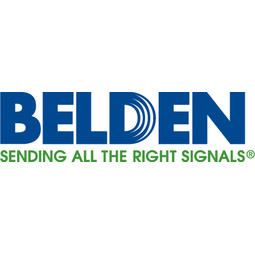
|
UBS Arena Belmont Park, New York
UBS Arena needed cabling and connectivity solutions that would support sophisticated sound systems, a 5G network, a distributed antenna system (DAS), New York’s largest scoreboard and two levels of high-resolution LED ribbon boards.The venue’s network infrastructure needed to support these types of connected technologies as well.The wireless network would need to support the seamless connection of tens of thousands of devices in the venue’s completely cashless environment.
|
|
|
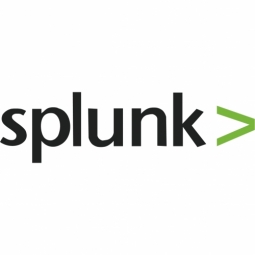
|
Nikko Chemicals' Secure Cloud Migration with Data-Driven Approach
Nikko Chemicals, a specialty chemicals manufacturer in Japan, was facing several challenges in its cloud operations. The company was struggling with the time-consuming integration of logs from disparate sources, which resulted in restricted operational visibility. There were also security concerns related to cloud migration and the management of Software as a Service (SaaS) applications. Additionally, the company had limited manpower and resources for managing its cloud infrastructure. These challenges were hindering the company's business continuity strategy, which aimed to run a secure, scalable, hassle-free, and fully visible cloud operation.
|
|
|

|
Grocery Chain Achieves Energy Efficiency Through IoT Integration
The customer, a national grocery retailer with over 1,900 stores across 20 well-known banners, was facing a significant challenge in centralizing energy management due to the multiple divisions, disparate building management systems, and a large variety of hardware in their portfolio. The customer had a series of public energy commitments aimed at reducing their carbon footprint. They required a solution that would provide real-time visibility into the performance of their refrigeration, HVAC, and lighting systems at the equipment level across their enterprise. They also needed to achieve energy reductions that would meet corporate ROI requirements, proactive maintenance processes on identified energy and building efficiency opportunities, the ability to validate energy savings through a Measurement & Verification (M&V) process, and the ability to integrate multiple IoT data points into one centralized platform.
|
|




